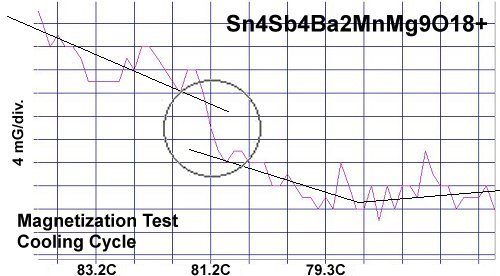
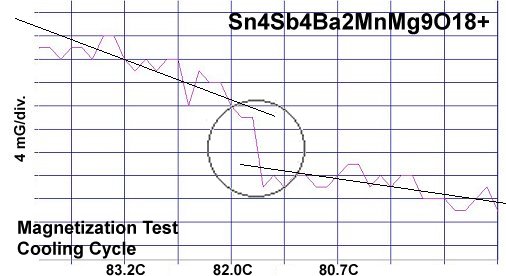


Superconductors.ORG herein reports the synthesis of the first room-temperature superconductor that does not contain any copper. Sn4Sb4Ba2MnMg9O18+ has produced a critical transition temperature above 80 Celsius both resistively and magnetically. Its copper-oxide progenitor Sn4Sb4Ba2MnCu9O18+ has a Tc near 78C. So, the MgO analog has yielded a higher transition temperature than the prototype.
The first 40 room-temperature superconductors that were discovered all featured copper-oxide layering. In this new material magnesium-oxide is the facilitator of superconductivity. In the plots at page top, Meissner transitions of 10-12 milligauss appeared near 81C in separate magnetization tests. Similar transitions near 81C are also evident in the below resistance tests. Both cooling and heating are shown, with lines drawn through the noise to approximate the average of the data points.
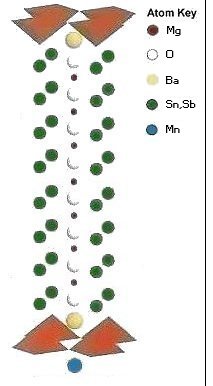
|
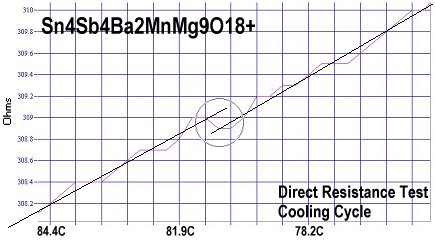
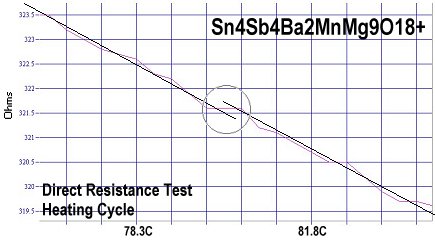
This new formulation features the same long chains of tin-antimony in the C1 axis, but instead has magnesium-oxygen chains in the C2 axis. Assuming the same number of oxygen atoms bond with Mg as did with Cu, the target structure would be classified F212 (shown at left). And, as with prior RTSC discoveries, the volume fraction is low. The value of this discovery lies in revealing the utility of magnesium-oxide. In 2011, MgO was part of the anion of the very first room-temperature superconductor. Now, in 2016, it has become a facilitator for RTSC along the entire length of the unit cell. |
In order to maximize formation of the F212 structure, this compound was synthesized using the layer cake method, as shown below. The pellet had approximately 100 interference layers. And, even using this layering technique, the volume fraction is low, requiring very sensitive test equipment.
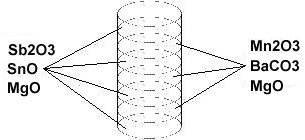
Stoichiometric ratios of the below chemicals were used for the ODD layers:
Sb2O3 99.999% (Alfa Aesar) 5.36 grains...and the below ratios for the EVEN layers.
Mn2O3 98% (Alfa Aesar) 0.72 grainThe chemical precursors were pelletized at 60,000 PSI and sintered for 10+ hours at 880C. The pellet was then annealed for 10+ hours at 500C in flowing O2. Temperature was determined using an Omega type "T" thermocouple and precision OP77 DC amplifier. The magnetometer employed twin Honeywell SS94A1F Hall-effect sensors with a tandem sensitivity of 50 mv/Gauss.
RESEARCH NOTE: These materials can be strongly hygroscopic. All tests should be performed immediately after annealing.
RE-PUBLICATION NOTICE: Elsevier Publishing, dba Elsevier Science, as well as Morris Communications, both print and broadcast divisions, are specifically prohibited from re-publishing any part of this news story.
E. Joe Eck
© 2016 Superconductors.ORG
All rights reserved.
 BACK to "News" page at Superconductors.ORG
BACK to "News" page at Superconductors.ORG